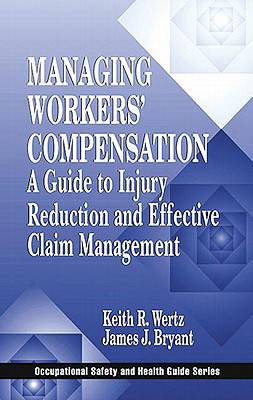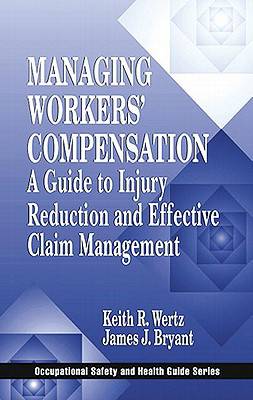
- Retrait gratuit dans votre magasin Club
- 7.000.000 titres dans notre catalogue
- Payer en toute sécurité
- Toujours un magasin près de chez vous
- Retrait gratuit dans votre magasin Club
- 7.000.000 titres dans notre catalogue
- Payer en toute sécurité
- Toujours un magasin près de chez vous
Managing Workers' Compensation
A Guide to Injury Reduction and Effective Claim Management
Keith Wertz, James J Bryant
181,95 €
+ 363 points
Description
Workers' compensation causes headaches throughout all levels of an organization. Injuries affect production, costs, and morale. Managing Workers' Compensation: A Guide to Injury Reduction and Effective Claim Management lays out - in logical order - management and safety procedures that reduce injuries and the aggravation that follows. The authors cover hiring, training, and managing employees with injury avoidance in mind. They provide a blueprint for dealing with injured employees and their families, and for determining the correct time for the employee to return to work.
The book discusses the all-important issues of fraud, modified duty, substance abuse testing and accident investigations. It also provides guidance for managing your organization's safety efforts in a manner that targets workers' compensation cost control as one of its major objectives. In addition to comprehensive coverage of workers' compensation, the book gives you a thorough explanation of additional sources of assistance, including the availability and utility of Internet safety resources, a complete listing of state workers' compensation agencies, and sample checklists that help you evaluate your workplace. Although workers' compensation laws vary from state-to-state, the principles behind the system and the ability of employers to influence their own premiums remain consistent. By gaining a thorough understanding of these principles and implementing proven cost control strategies, you can realize substantial savings. Managing Workers' Compensation: A Guide to Injury Reduction and Effective Claim Management explains the process by which premiums are calculated and shows how you can impact - favorably - the amount your organization pays in premiums.Spécifications
Parties prenantes
- Auteur(s) :
- Editeur:
Contenu
- Nombre de pages :
- 312
- Langue:
- Anglais
- Collection :
Caractéristiques
- EAN:
- 9781566703482
- Date de parution :
- 07-12-00
- Format:
- Livre relié
- Format numérique:
- Genaaid
- Dimensions :
- 156 mm x 234 mm
- Poids :
- 612 g







